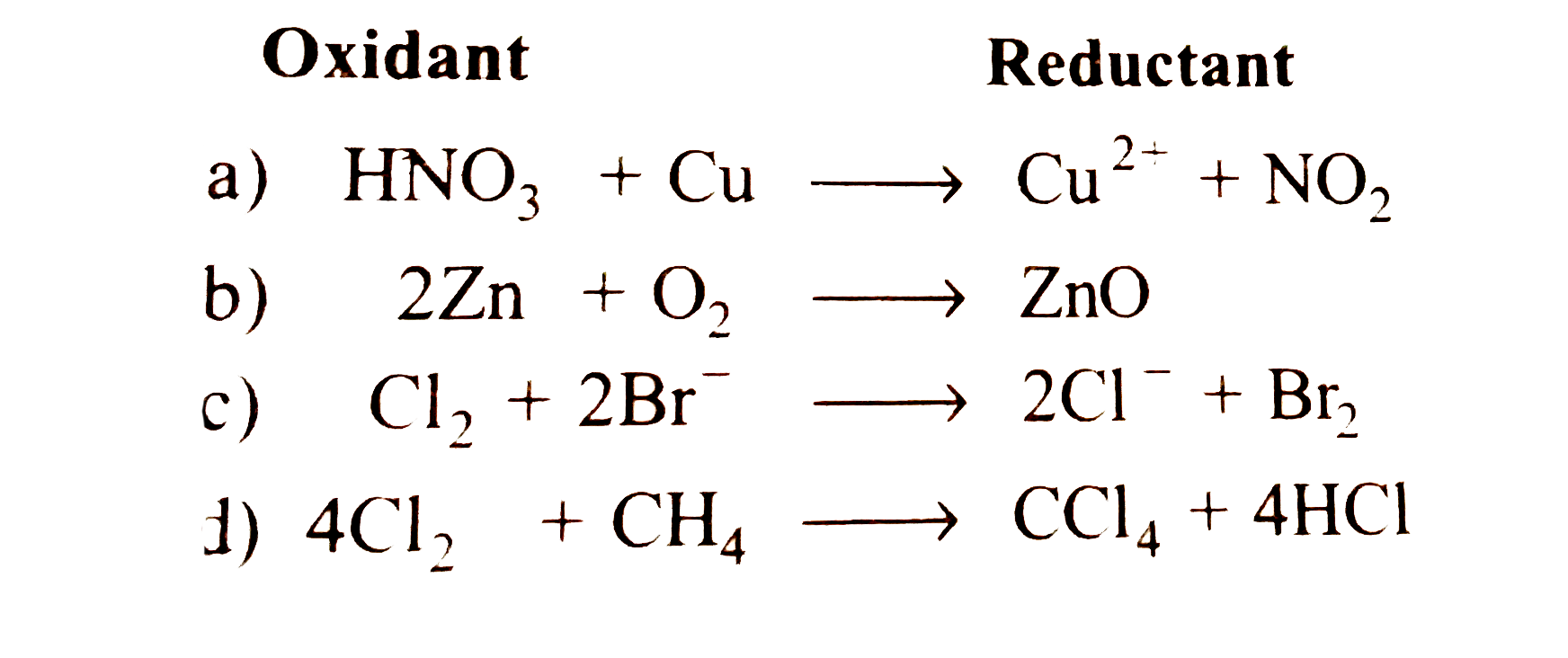In an oxidation process for a cell,
M1→Mn+1+ne−,
the other metal (M2) being univalent showing reduction takes up ...... electrons to complete redox reaction.
(n−1)
1
n
2
The correct Answer is:C
The reaction shows Mn+2+ne−→M2
i.e. electrons released at anode = electrons used at cathode.
Topper's Solved these Questions
- REDOX REACTIONSBOOK - NCERT FINGERTIPSCHAPTER - REDOX REACTIONSEXERCISE - Higher Order Thinking Skills
9 Videos
- REDOX REACTIONSBOOK - NCERT FINGERTIPSCHAPTER - REDOX REACTIONSEXERCISE - NCERT Exemplar
11 Videos
- REDOX REACTIONSBOOK - NCERT FINGERTIPSCHAPTER - REDOX REACTIONSEXERCISE - MCQs (REDOX REACTIONS AND ELECTRODE PROCESSES)
1 Videos
- PRACTICE PAPER 3BOOK - NCERT FINGERTIPSCHAPTER - PRACTICE PAPER 3EXERCISE - Practice Paper 3
46 Videos
- SOME BASIC CONCEPTS OF CHEMISTRY BOOK - NCERT FINGERTIPSCHAPTER - SOME BASIC CONCEPTS OF CHEMISTRY EXERCISE - Assertion And Reason
10 Videos
Similar Questions
Oxidation is de-electronation whereas reduction is electronation. Oxidants are the substances which oxidise others and reduced themselves. On the other hand reductants are the substances which reduce others and oxidised themselves. The oxidation number of an element in a compound decides its nature to act as oxidant or reductant. Oxidation-reduction occur simultaneously and the overal chemical change is called redox reaction. Redox reactions are of three types :
(i) Intermolecular erdox reactions, (ii) Auto-redox or disproportionation reaction, and (iii) Intramolecular redox reactions.
Select the oxidant in the reaction,
F2+1/2O2→F2O
View SolutionOxidation is de-electronation whereas reduction is electronation. Oxidants are the substances which oxidise others and reduced themselves. On the other hand reductants are the substances which reduce others and oxidised themselves. The oxidation number of an element in a compound decides its nature to act as oxidant or reductant. Oxidation-reduction occur simultaneously and the overal chemical change is called redox reaction. Redox reactions are of three types :
(i) Intermolecular erdox reactions, (ii) Auto-redox or disproportionation reaction, and (iii) Intramolecular redox reactions.
Total number of electrons transferred during the change :
3Fe+4H2O→Fe3O4+4H2
View Solution
Knowledge Check
In an oxidation process for a cell,
M1→Mn+1+ne−,
the other metal (M2) being univalent showing reduction takes up ...... electrons to complete redox reaction.A(n−1)B1CnD2For which of the following metal M2+(aq)+2e−→M(s) reaction have positive reduction potential value
AFeBCuCZnDAlOxidation is de-electronation whereas reduction is electronation. Oxidants are the substances which oxidise others and reduced themselves. On the other hand reductants are the substances which reduce others and oxidised themselves. The oxidation number of an element in a compound decides its nature to act as oxidant or reductant. Oxidation-reduction occur simultaneously and the overal chemical change is called redox reaction. Redox reactions are of three types :
(i) Intermolecular erdox reactions, (ii) Auto-redox or disproportionation reaction, and (iii) Intramolecular redox reactions.
Which of the following show intramolecular redox change?
(I) 2KClO3→2KCl+3O2
(II) (NH4)2Cr2O7→N2+Cr2O3+4H2O
(III) NH4NO2→N2+2H2O
(IV) 2Cu+→Cu2++CuAI,II,IIIBI,IVCII,IIIDII,IV
Oxidation is de-electronation whereas reduction is electronation. Oxidants are the substances which oxidise others and reduced themselves. On the other hand reductants are the substances which reduce others and oxidised themselves. The oxidation number of an element in a compound decides its nature to act as oxidant or reductant. Oxidation-reduction occur simultaneously and the overal chemical change is called redox reaction. Redox reactions are of three types :
(i) Intermolecular erdox reactions, (ii) Auto-redox or disproportionation reaction, and (iii) Intramolecular redox reactions.
The missing terms in the reaction :
Cr2O2−7+14H++?→2Cr3++7H2O
View SolutionOxidation is de-electronation whereas reduction is electronation. Oxidants are the substances which oxidise others and reduced themselves. On the other hand reductants are the substances which reduce others and oxidised themselves. The oxidation number of an element in a compound decides its nature to act as oxidant or reductant. Oxidation-reduction occur simultaneously and the overal chemical change is called redox reaction. Redox reactions are of three types :
(i) Intermolecular erdox reactions, (ii) Auto-redox or disproportionation reaction, and (iii) Intramolecular redox reactions.
Which of the following shows auto-redox change ?
(I) 2HCHO+NaOH→HCOONa+H2O
(II) Cl2+H2O→HCl+HClO
(III) 2Cu+→Cu2++Cu
(IV) Cr+3H2O+3OCl−→3Cl−+6OH−
View SolutionOxidation is de-electronation whereas reduction is electronation. Oxidants are the substances which oxidise others and reduced themselves. On the other hand reductants are the substances which reduce others and oxidised themselves. The oxidation number of an element in a compound decides its nature to act as oxidant or reductant. Oxidation-reduction occur simultaneously and the overal chemical change is called redox reaction. Redox reactions are of three types :
(i) Intermolecular erdox reactions, (ii) Auto-redox or disproportionation reaction, and (iii) Intramolecular redox reactions.
Six mole of Cl2 undergoes a loss and gain of 10 mole of electrons to form two oxidation state of cl. The balance redox change is :
View SolutionOxidation and reduction process involves the transaction of electrons. Loss of electrons is oxidation and the gain of electrons is reduction. It is thus obvious that in a redox reaction, the oxidant is reduced by accepting the electrons and the reductant is oxidised by losing electrons. The reactions in which a species disproportionates into two oxidation states (lower and higher) are called disproportionation reactions. In electrochemical cells, redox reaction is involved, i.e., oxidation takes place at anode and reduction at cathode.
The reaction Cl2→Cl−+ClO−3 is:
View SolutionOxidation and reduction process involves the transaction of electrons. Loss of electrons is oxidation and the gain of electrons is reduction. It is thus obvious that in a redox reaction, the oxidant is reduced by accepting the electrons and the reductant is oxidised by losing electrons. The reactions in which a species disproportionates into two oxidation states (lower and higher) are called disproportionation reactions. In electrochemical cells, redox reaction is involved, i.e., oxidation takes place at anode and reduction at cathode.
Which of the following reactions is/are correctly indicated?

View Solution
